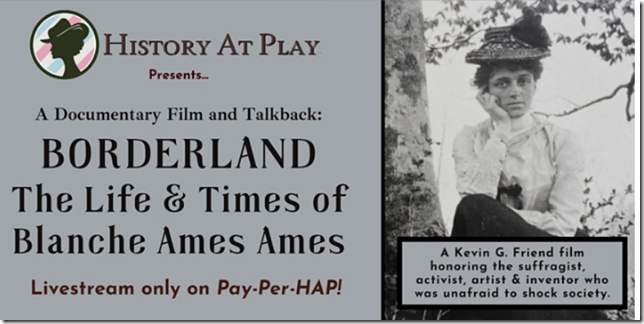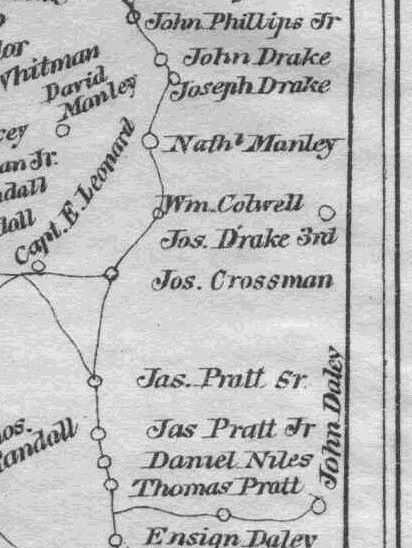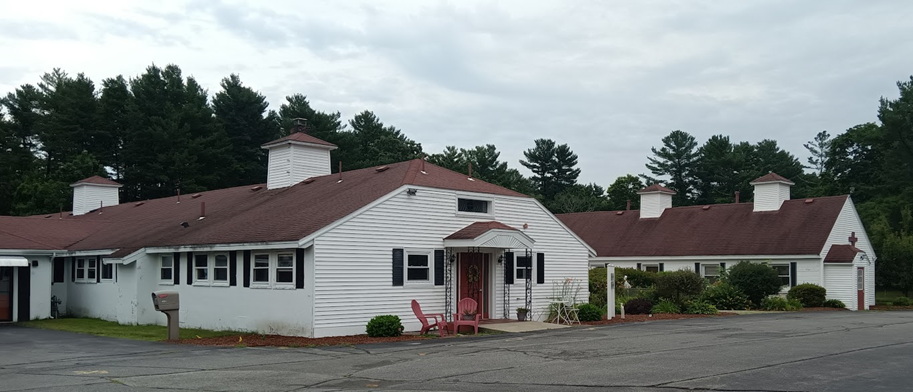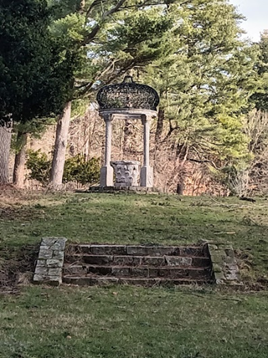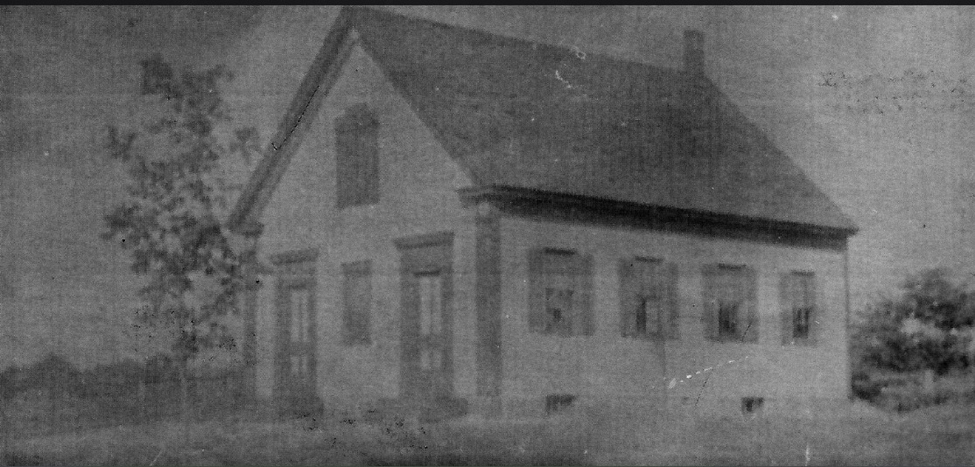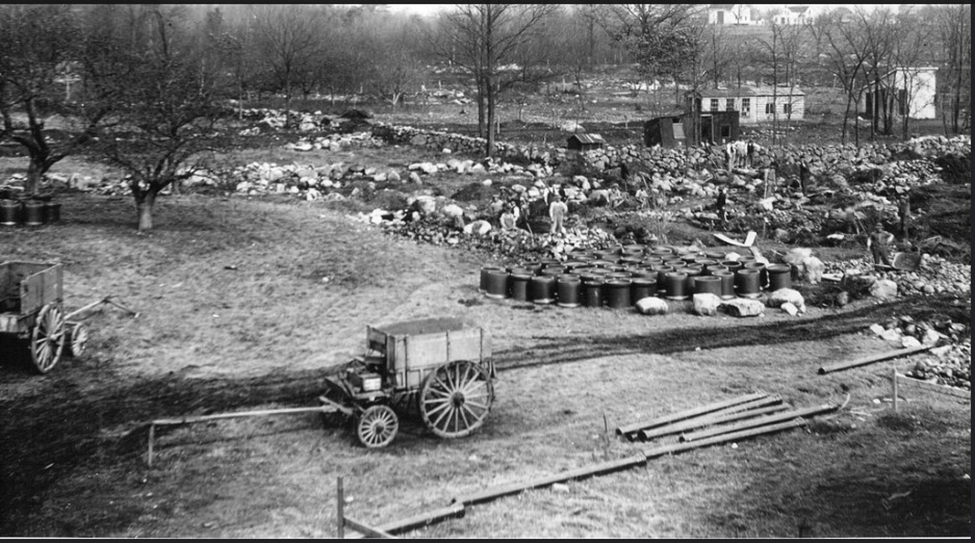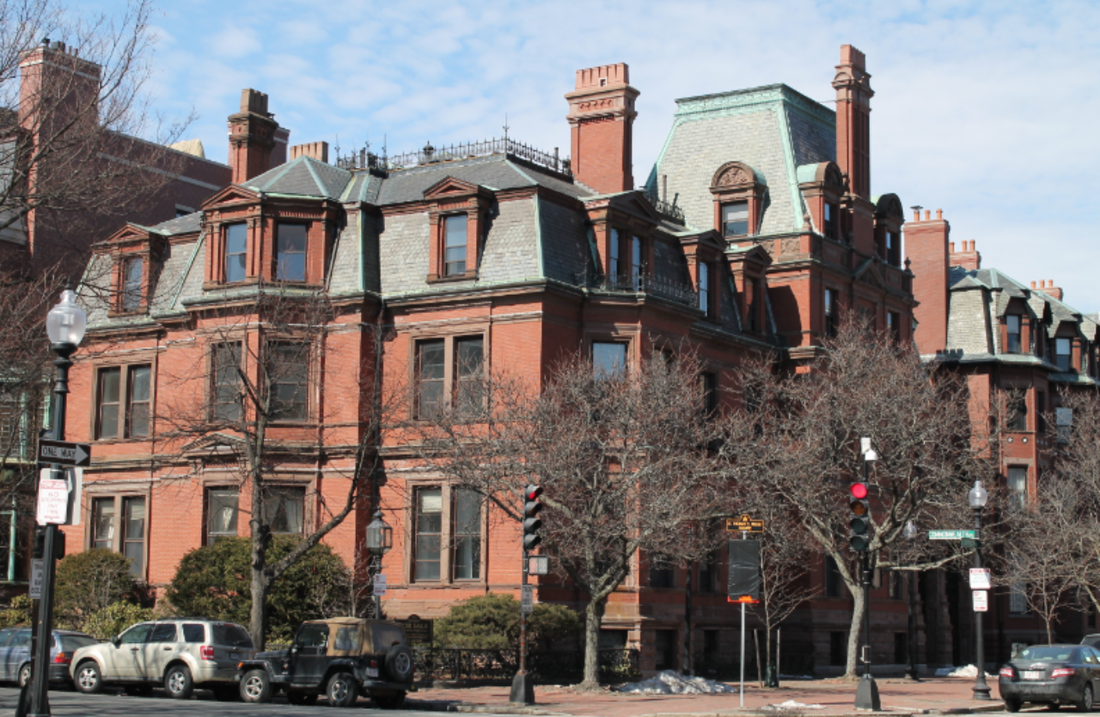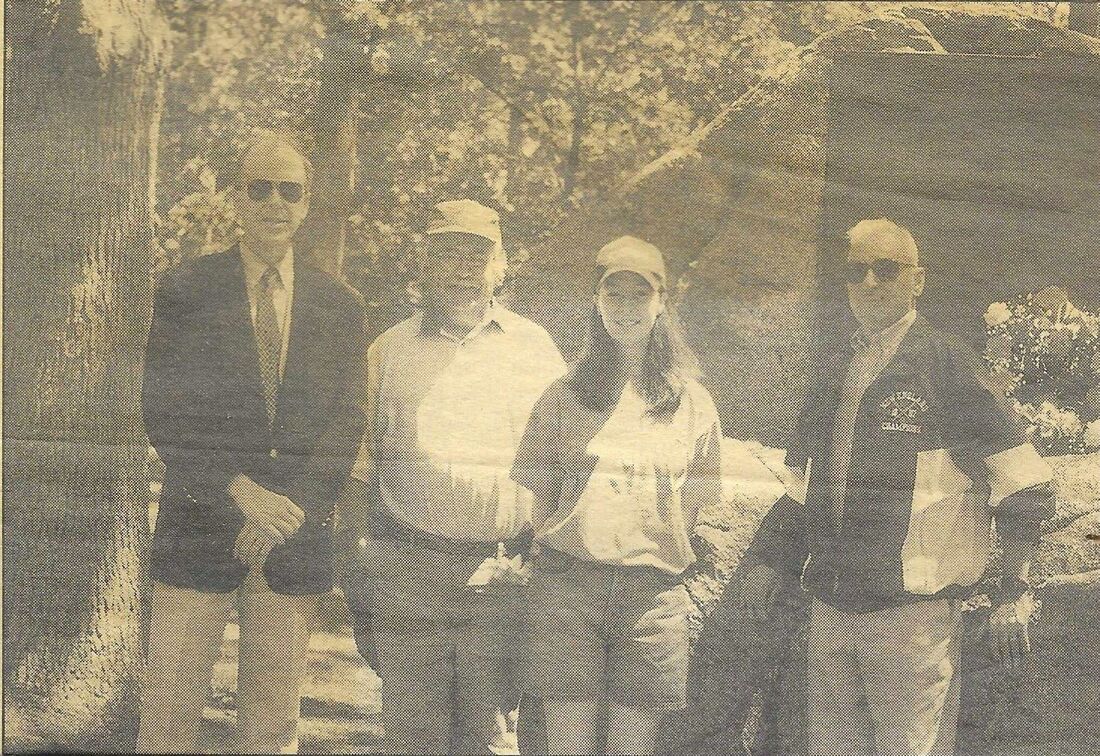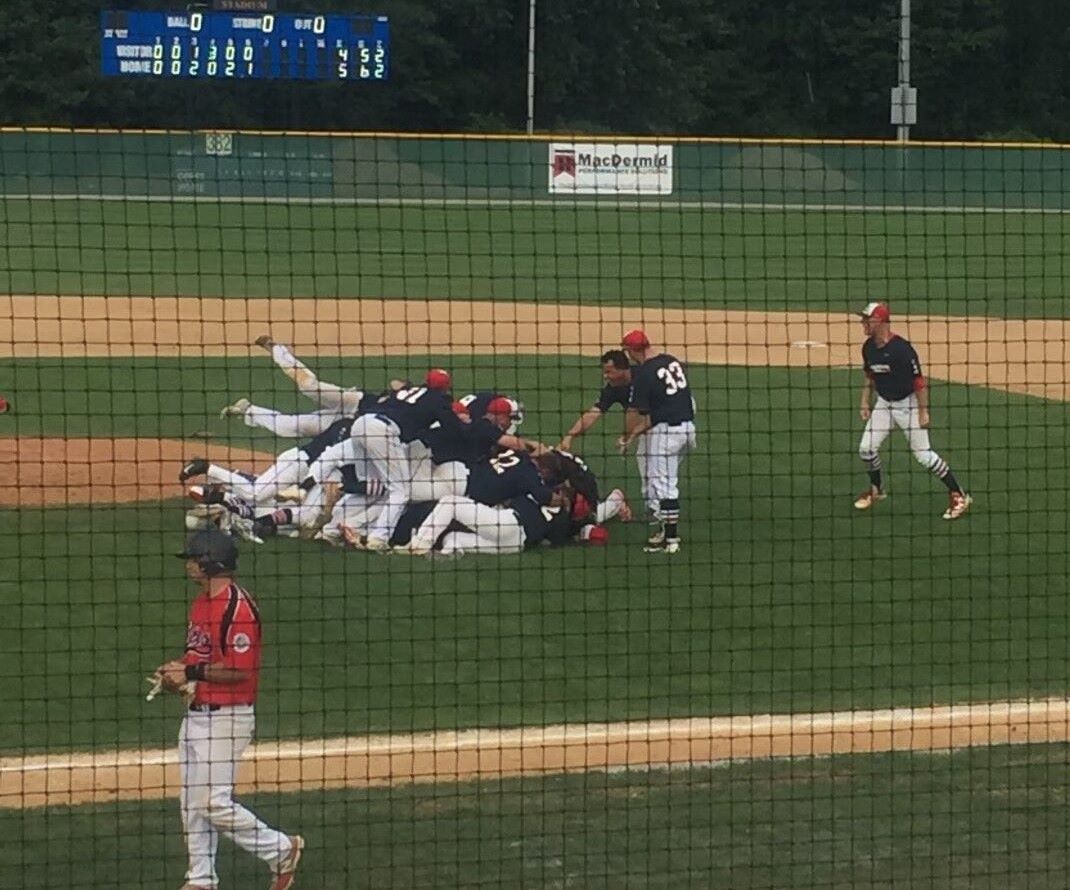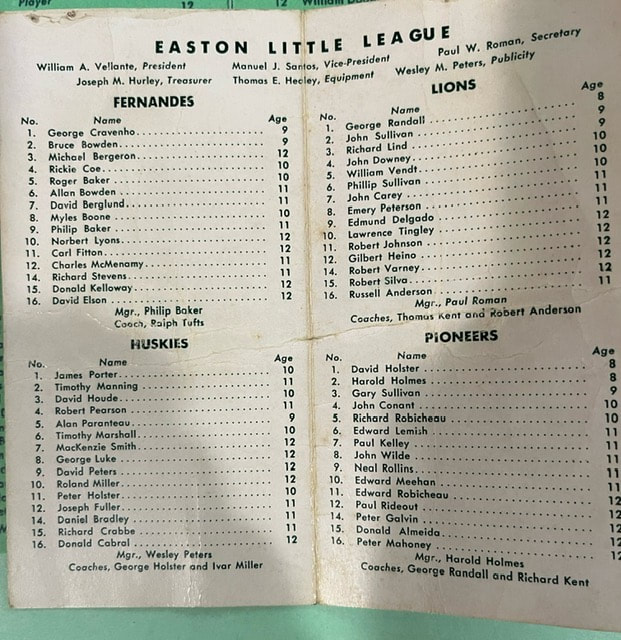|
“The most beautiful experience we can have is the mysterious. It is the fundamental emotion that stands at the cradle of true art and true science.” ― Albert Einstein, Anyone who knows me, knows I love a good mystery. Louise Penny and Kate Ellis aside, one of the reasons I love studying and teaching history is because the study of history is simply uncovering the mysteries of the past. Whether digging into the ground or into a book, there are always intriguing clues, though often only a partial answer is revealed- a glimpse at a long-ago life, culture, reality. Rhododendron Drive. A hint of spring in the air. Stonehill College. I was drawn to the woods at Stonehill College by tales of the John Dailey homestead that was uncovered over 20 years ago by Stonehill professors and students. Beginning in 1999 an excavation was begun ‘deep in the woods’ off Rhododendron Drive, now Blessed Basil Moreau Drive.* John Dailey came to Easton, very early, before 1708. According to Chaffin, “he lived east of the brook near Stone-House Hill, between where the old road once ran and the present road now runs.” He was a hogreeve or hog constable, on the lookout for wandering domestic pigs. The excavated foundation showed Dailey's home to be about 250 square feet. It was also established where the well, animal pens, and midden (refuse heap) were located. The artifacts are archived at Stonehill College. I’m still looking for the site, which was allowed to revert back to nature, (more about that in another newsletter), but over the period of a few days I explored much of the wooded campus, being careful, of course, to stay off of any paved roads. In the lower right-hand corner of this circa 1750 map can be seen John Dailey’s name. His property would have been on the current Stonehill College campus. To the west of Jos. Crossman's would become Main Street and North Easton Village. While it is wonderful and appropriate that many Ames buildings have been renovated and/or repurposed; it is nice to see some artifacts let to 'just be', whether on purpose or by default. The photo below shows abandoned architectural features resting peacefully along Rhododendron Drive. The rhododendrons themselves were imported from England. Leftovers from Stone House Hill House? (Now Donahue Hall.) Seen along the right-hand side of Rhododendron Drive walking from Washington Street. Also mysterious on campus is the collection of huge boulders in an area near the Belmont Street entrance that have been linked to the late 17th century, the era of King Philip, chief of the Wampanoags. Some call it King Philip's Cave and believe King Philip himself hid out there during the First Indian War (1675-6). There was a student excavation at that site in 1957. Additional artifacts are dated to between 1500 BC and 500 AD. Some ‘cave-like’ formations. The area was strewn with large boulders. There was graffiti on some, and remains of a campfire nearby. Still more to learn- off St Andre Drive, also near Belmont Street, are examples of millstones that were quarried and carved for the J.O. Dean Grist Mill that was located at the intersection of Route 138 and Depot St. Only hand tools were used to carve them. One of several millstones, some unfinished. This expedition is over for now, but stay tuned for more mysteries- of another nature altogether! “The possession of knowledge does not kill the sense of wonder and mystery. There is always more mystery.” ― Anais Nin Anne Wooster Drury [email protected] *Basil Moreau (1799-1873) was the founder of the Congregation of the Holy Cross. The Congregation purchased the estate of Frederick Lothrop Ames in 1935 to be used as a seminary. Stonehill College was founded in 1948. Some information was gathered from the Stonehill Alumni Magazine, Fall 1999, and stonehillcollege.edu.
1 Comment
If it’s spring that must mean baseball! The Easton Historical Society and Museum will have its monthly Open House on Sunday, March 19th from 11:00 to 4:30. Featured will be Easton’s very first Little League baseball charter from 1952. The first four teams in the league were: Fernandes (Supermarket), Lions (The Lions Club), Pioneers (The Pioneer Club), and Huskies (The Easton Huskies Club). All games were played at Frothingham Park. A few years later Easton’s Little League expanded to six teams with Howard’s Insurance and Easton Pharmacy joining in. Below is a schedule of the 1953 season with names of all the players, coaches, and leadership. So many familiar names, and we urge all of you and your families to attend if possible. A few guest speakers will join us and pictures from the very early days will be on display. We will have photos, schedules from the 50s, 60s and beyond. We are looking for donations of any artifacts you may have that would add to this history. Hats, gloves, bats, helmets, pictures and uniforms for our display and archives. We are looking for a very exciting day! Refreshments will be served. Thank you, Jonathan Coe (Howard’s Insurance 1962-64) Schedule, 1953. More baseball! The Easton Huskies and the Cranberry League "Excellence In Amatuer Baseball Since Eisenhower Was President" With spring comes the advent of baseball season. For those who love baseball, there is much to look forward to. Fields at Militia Park, Oliver Ames, and Frothingham Park will come alive once again. Grass will turn green; chalk lines will be put down. It is a happy time. Sadly, though, Easton’s well-known semi-pro baseball team, the Easton Huskies, is for now, history. According to Ed Hands in Easton's Neighborhoods, the Easton Huskies grew out of a twilight league created in the 1930's. The best players from the various teams played against other towns on Sundays. In 1939 after being criticized for their 'motley' appearance in mismatched uniforms, Connie Spillane, Bill Baxter, and others chose a town uniform and the team name Easton Huskies. In 1960 Connie founded the Cranberry Baseball League, which was a ‘wooden bat’ league. The Cranberry League was a member of the American Amateur Baseball Congress, Stan Musial Division. Players were amateur, collegiate, or former professional athletes who competed at a very high level. Connie Spillane, a multi-sport athlete and graduate of Oliver Ames, was a powerful force in baseball in southeastern Massachusetts and Rhode Island for over 70 years. Connie passed away in 2003. Home field for the Huskies was Frothingham Park. Annual Memorial Service for Louis A. Frothingham and his wife, Mary Ames Frothingham on the Sunday before the Huskies season opener, May 1998. Pictured: their grandson David Ames, OA teacher Ed Hands, OA student Erin Pope, and Park Superintendent Buddy Wooster. In 1973 when Connie Spillane retired from coaching, he was followed by Bob Richards, Bob Gibson, Peter Johnson, and Bill Baxter. Beginning in 1985, Easton resident Bob Wooster took over as player-coach for the Easton Huskies (1985-1997), and then coach (1997-2010). Bob began his baseball career playing Little League for Howard Insurance and went on to play baseball (and basketball) for Oliver Ames. “Wooster is arguably the best all-around baseball player in OA history.” (Easton Public Schools Town of Easton Massachusetts). After a stellar career at Stonehill College Bob went on to the Cleveland Indians where he made it as far as their Double A team. With Bob as coach, the Huskies won five Massachusetts Stan Musial titles and travelled to the Stan Musial World Series four times. Coach Bob Wooster. Many Easton athletes have played for the Huskies, too many to mention here. A few old-timers mentioned at the 50th anniversary celebration in 1990 were Clyde Craig, Al Gomes, and Gil Heino. Keeping a coach was difficult after Bob left. Both Chris Welch and John Ferrara stepped up, but currently the organization is without a coach. Much time and work is involved in managing a semi-pro team. Watching a Huskies game at Frothingham Park was a nice way to spend a summer day. Maybe sometime in the future, fans will once again fill the stands, wooden benches, folding chairs and grassy slopes, and watch another Sunday afternoon Huskies doubleheader. Easton Huskies celebrate after a win.
Anne Wooster Drury ehsnewsletter12 http://www.cranberryleague.com/, (Frothingham Memorial Park), Easton'sNeighborhoods by Ed Hands (Easton Public Schools Town of Easton Massachusetts), [email protected] The Easton Historical Society and Museum will be having our monthly open house featuring Easton’s very first Little League baseball charter in 1952. This will be on Sunday, March 19th from 11-4:30 at our Museum.
We would like to invite all and especially the members of the very first team members that played and participated. A few guest speakers and displays of pictures of the very early days will be there. The first 4 teams in the league were: Fernandes(super market), Lions (The Lions club), Pioneers( The Pioneer club, and Huskies(The Easton Huskies club). All games were played at Frothingham Park. A few years later Easton’s LL expanded to 6 teams with Howard’s Insurance and Easton Pharmacy joining in. Below is a schedule of the 1953 season with names of all the players, coaches and leadership. So many familiar names and urge all of them and their families to attend if possible. We will also have pictures, schedules from the 50s, 60s and beyond. We are looking for donations of any artifacts you may have that would add to this history. Hats, gloves, bats, helmets, pictures and uniforms for our display and archives. We are looking for a very exciting day! Refreshments will be served. Thank you, Jonathan Coe (Howard’s Insurance 1962-64) |
Author
Anne Wooster Drury Archives
June 2024
Categories |
Easton Historical Society and Museum
PO Box 3
80 Mechanic Street
North Easton, MA 02356
Tel: 508-238-7774
[email protected]

